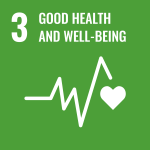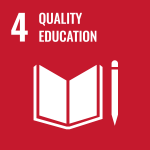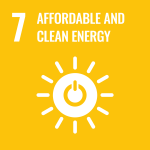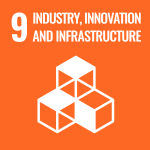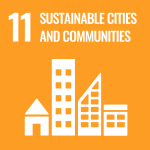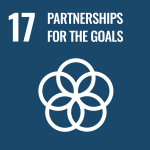The Sustainable Businesses vertical within the Sustainable Development Goals (SDG) framework is dedicated to fostering environmentally conscious and socially responsible entrepreneurship. It focuses on empowering businesses to operate in ways that minimize their environmental impact, promote ethical practices, and contribute to the achievement of global sustainability goals. By aligning business strategies with sustainable development objectives, this vertical encourages companies to thrive while actively participating in the global effort to create a more equitable and eco-friendly world.
The Circular and Proximity Economy vertical within the Sustainable Development Goals (SDG) framework emphasizes the shift towards sustainable economic models. It promotes the idea of reducing waste and environmental impact by encouraging recycling, reusing, and repurposing resources. Additionally, it advocates for localized production and consumption to minimize transportation-related emissions and support local communities. This vertical underscores the importance of a more circular and locally-focused economy in achieving long-term environmental and economic sustainability.
The Sustainable Cities and Communities vertical within the Sustainable Development Goals (SDG) framework is dedicated to creating urban environments that are livable, inclusive, and environmentally responsible. It focuses on improving infrastructure, housing, transportation, and social services to enhance the quality of life for city dwellers. By promoting sustainable urban planning and development, this vertical aims to reduce congestion, pollution, and inequality while fostering economic growth and social cohesion. It is a critical element in building a more sustainable and equitable future for people living in cities and communities worldwide.
The Health Tech vertical within the Sustainable Development Goals (SDG) framework harnesses technology and innovation to revolutionize healthcare. It aims to enhance access to quality healthcare services, improve medical diagnostics, and promote wellness and health education. By integrating cutting-edge technologies like telemedicine, wearable devices, and data analytics, this vertical seeks to address healthcare disparities and create more efficient and patient-centric healthcare systems. It plays a crucial role in achieving the SDG goal of ensuring good health and well-being for all, especially in an increasingly digital and interconnected world.
The Responsible Production and Consumption Sustainable Development Goal (SDG) is focused on fostering sustainable practices in manufacturing and consumption patterns. It aims to reduce waste, promote resource efficiency, and encourage responsible consumption of goods and services. This SDG emphasizes the importance of reducing environmental impact, minimizing pollution, and ensuring fair labor practices throughout the production and supply chain. By promoting sustainability in production and consumption, it contributes to a more eco-friendly, equitable, and resilient global economy while striving to mitigate the negative impacts of overconsumption and wasteful practices on the environment and society.
The Smart Mobility initiative within the Sustainable Development Goals (SDG) framework focuses on creating efficient, sustainable, and innovative transportation solutions in urban areas. It emphasizes the integration of technology and data-driven approaches to improve urban mobility, reduce congestion, and decrease the environmental footprint of transportation systems. Smart Mobility strives to provide accessible, affordable, and safe transportation options while minimizing traffic congestion and emissions. By promoting sustainable and intelligent urban transportation, it contributes to the broader SDG goal of creating livable and environmentally responsible cities for all.
The Ed Tech initiative within the Sustainable Development Goals (SDG) framework is dedicated to enhancing the quality and accessibility of education through technology. It leverages digital tools, online resources, and innovative teaching methods to make quality education more inclusive and accessible to learners worldwide. Ed Tech aims to bridge educational gaps, improve literacy rates, and empower individuals with the knowledge and skills they need for a brighter future. By integrating technology into education, it supports the broader SDG goal of ensuring inclusive and equitable quality education for all, regardless of their location or circumstances.
Our verticals are aligned with the following SDG
